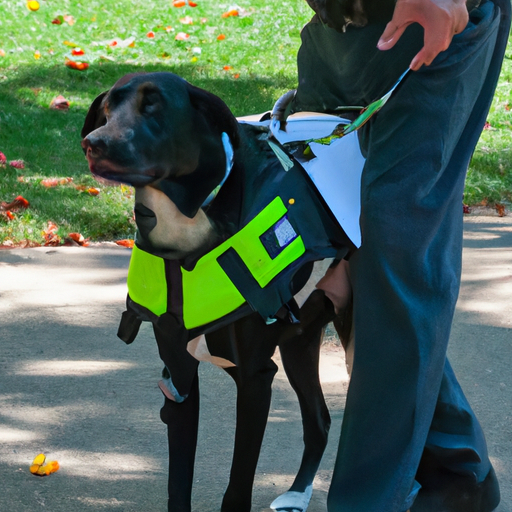Understanding Service Dogs
You might have seen a service dog walking down the street with its handler, or maybe you’ve encountered one in a public place. These dogs aren’t just pets; they play an essential role in helping their handlers lead more independent lives. But what exactly do these dogs do? Let’s explore the world of service dogs together.
Service dogs are specially trained to assist people with various disabilities, such as:
- Visual impairment
- Hearing impairment
- Mobility impairment
- Mental illnesses such as PTSD
- Neurological disorders
- Certain medical conditions
Roles of Service Dogs
The roles and responsibilities of a service dog can significantly vary depending on the needs of the individual they’re assisting. Here are a few common tasks that service dogs can perform:
- Guiding the visually impaired: These dogs, often known as guide dogs, help their handlers navigate through public spaces.
- Alerting individuals to sounds: For those with hearing impairments, service dogs can alert them to important sounds such as doorbells or alarms.
- Assisting with mobility issues: Service dogs can help individuals with mobility impairments by fetching items, opening doors, or even helping with balance.
- Alerting to medical issues: Some service dogs are trained to alert their handlers to impending medical issues, such as a seizure.
Training and Certification
Service dogs undergo rigorous training to ensure they can perform their tasks reliably and unobtrusively. The training process involves two primary stages:
- Basic obedience and socialization: This stage involves teaching the dog to follow basic commands and behave appropriately in various social settings.
- Task-specific training: This stage involves teaching the dog the specific tasks they will need to perform to assist their future handler.
| Stage | Duration | Focus |
|---|---|---|
| Basic obedience and socialization | 6-12 months | Basic commands, manners, social behavior |
| Task-specific training | 6-12 months | Specific tasks to assist the handler |
Legal Rights and Public Access
Under the Americans with Disabilities Act (ADA), service dogs are allowed in most public places where other dogs might not be permitted, including restaurants, grocery stores, and even on airplanes. This is because these dogs are not considered pets, but working animals.
However, there are a few stipulations. The dog must be under control and not disruptive, and the business can ask two questions:
- Is the dog a service animal required because of a disability?
- What work or task has the dog been trained to perform?
Frequently Asked Questions
Q: Can any breed of dog be a service dog?
A: Yes, any breed can be a service dog as long as they can perform the necessary tasks.
Q: How can I identify a service dog?
A: Service dogs often wear a vest or harness, but this is not required by law. The best way to identify a service dog is by its behavior.
Q: Can service dogs go anywhere?
A: Generally, yes. The ADA allows service dogs in most public places. However, they may be restricted from certain areas for health or safety reasons.
Q: How long does it take to train a service dog?
A: Generally, it takes 1-2 years to fully train a service dog.
Your role as a caregiver may involve interacting with service dogs or considering one for the person you care for. Understanding these dogs’ roles, rights, and responsibilities can help make the experience smoother and more beneficial for everyone involved.



